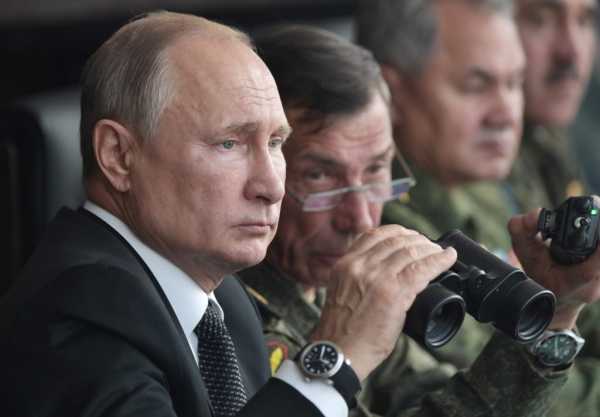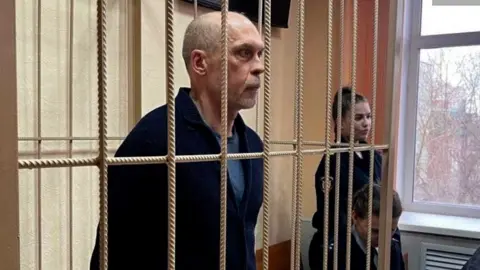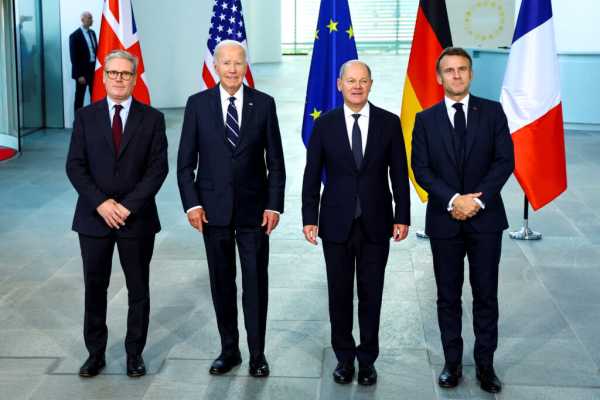
Throughout the past year, the Kremlin has sought to blame the full-scale invasion of Ukraine on decades of post-Cold War NATO expansion. Many international commentators have accepted these Russian claims uncritically and have argued that the West must accept a high degree of responsibility for provoking what has become the largest European conflict since World War II.
In reality, Putin has always known that NATO poses no credible security threat to Russia itself. Since the end of the Cold War, NATO’s force posture and the US military presence in Europe have greatly declined, reducing any potential military threat to Russia. What really scares the Russian elite is the spread of democracy. Today’s war can be traced directly back to the pro-democracy revolutions that rocked the former Soviet neighborhood in the early 2000s, all of which were bottom-up political movements that called for more accountable government while demanding the rule of law.
The revolutions of the early twenty-first century were aftershocks of the democratization wave that began in Eastern Europe in the late 1980s. As post-Soviet countries like Ukraine and Georgia struggled to establish more genuinely democratic forms of government in the early 2000s, Russia under Putin’s leadership was turning decisively away from democracy toward autocracy and illiberalism. This set the stage for an ideological struggle that would eventually lead to the full-scale invasion of Ukraine as Russia attempted to crush the growing democratic threat in its former imperial heartlands.
In the late 1980s, the Communist system in Eastern Europe began to crumble under the weight of its own internal contradictions and thanks to the role of civil society in Poland and other countries across the region. This democratization drive was people-centered and soon spread to the Soviet Union itself, which collapsed in 1991. A new wave of democratization emerged at the turn of the millennium with the Bulldozer Revolution in Serbia, the Rose Revolution in Georgia, the Orange Revolution in Ukraine, and the Tulip Revolution in Kyrgyzstan all taking place within the space of six years.
Each of these revolutions served as a potential model for neighboring populations that were also suffering from the same kind of chronic corruption and lack of political accountability. By studying and adopting the tactics of the activists who led these grassroots pro-democracy movements, they could push back against their own ineffective and autocratic political systems. This represented a serious threat to Putin’s increasingly authoritarian regime in Russia. The Kremlin responded by dubbing the uprisings “color revolutions” and attempting to discredit them as artificially orchestrated Western vehicles for regime change.
The idea of revolutionary ideologies proving contagious is nothing new. Revolutions that succeed in changing the political order in one country have always had the potential to inspire calls for similar change among neighboring populations. In the nineteenth century, liberal revolutions were seen as a threat to the dominant conservative monarchical system of government across Europe. This led to the Concert of Europe, which saw the continent’s major powers cooperate to prevent the spread of the liberal revolutionary movement.
When Vladimir Putin looked west during the early years of his reign, it wasn’t NATO expansion that worried him. He was scared by the sight of ordinary people in Russia’s neighborhood attempting to topple their autocratic governments. As more countries in the region sought to liberalize, Putin instituted a set of laws to suppress Russian civil society and stifle any attempts to push for reforms on the domestic front.
The rising tide of democratization close to Russia’s borders in the 2000s was not only a threat to Russia’s internal stability; it also posed external challenges. This shift toward more democratic government across the region was helping to consolidate the rules-based system that had gradually begun to replace the old European balance of power in the decades following World War II.
This approach to international relations presented obvious challenges to Putin, who favored a world where great powers could dominate their weaker neighbors. The Russian dictator would have much preferred a return to the power dynamics of the nineteenth century Concert of Europe. Instead, he found himself confronted by a new “Concept of Europe,” meaning a system where all states are respected, regardless of strength or size. This directly undermined Putin’s vision of Russia’s privileged place in international relations as one of a handful of great powers with the right to a voice in global affairs.
Eurasia Center events

Online Event Fri, March 3, 2023 • 9:00 am ET How can Kazakhstan’s political reforms create real change? Central Asia Democratic Transitions Politics & Diplomacy
Over the past two decades, concerns over the growing threat posed by a new wave of democratization fueled Putin’s growing obsession with Ukraine, which he came to regard as the key battlefield in the ideological struggle for the future of Europe. Viewed from the Kremlin, Ukraine was a contested space where Russian illiberalism was in direct confrontation with liberal democracy. The Russian dictator appears to have convinced himself that Ukraine’s embrace of European democracy could eventually prove fatal for Russia itself.
Crucially, Putin stubbornly refused to recognize the agency of the Ukrainian people. Instead, he continued to insist that the country’s two post-Soviet revolutions and subsequent reform movements were driven by external pressure from the United States and the European Union. This was wishful thinking to spare the blushes of a rejected Russia. While the West was indeed supportive of Ukraine’s transformation, the desire for change always came primarily from the Ukrainian people.
As the full-scale invasion of Ukraine enters its second year, this Ukrainian hunger for a democratic future is more evident than ever, as is the country’s wholesale rejection of Russian authoritarianism. The weapons provided by Ukraine’s international partners have helped inflict devastating casualties on Putin’s invading army, but they would be useless without the soldiers to operate them. Luckily for Ukraine, the country can count on hundreds of thousands of highly motivated men and women who are prepared to defend their country’s European choice against Russia’s brutal assault.
Putin hoped his invasion would deal a decisive blow to Ukraine’s dreams of European integration and force the country permanently back into the Kremlin orbit. He expected to conquer Kyiv in a matter of days and planned to extinguish Ukrainian independence entirely. Instead, he has achieved the exact opposite. Today’s Ukraine is more united than ever around the idea of a liberal democratic future as part of the Western world. As the Russian military now knows to its cost, this is a vision Ukrainians are ready to fight for.
Michael Williams is a nonresident senior fellow at the Atlantic Council’s Transatlantic Security Initiative.
Source: euractiv.com



